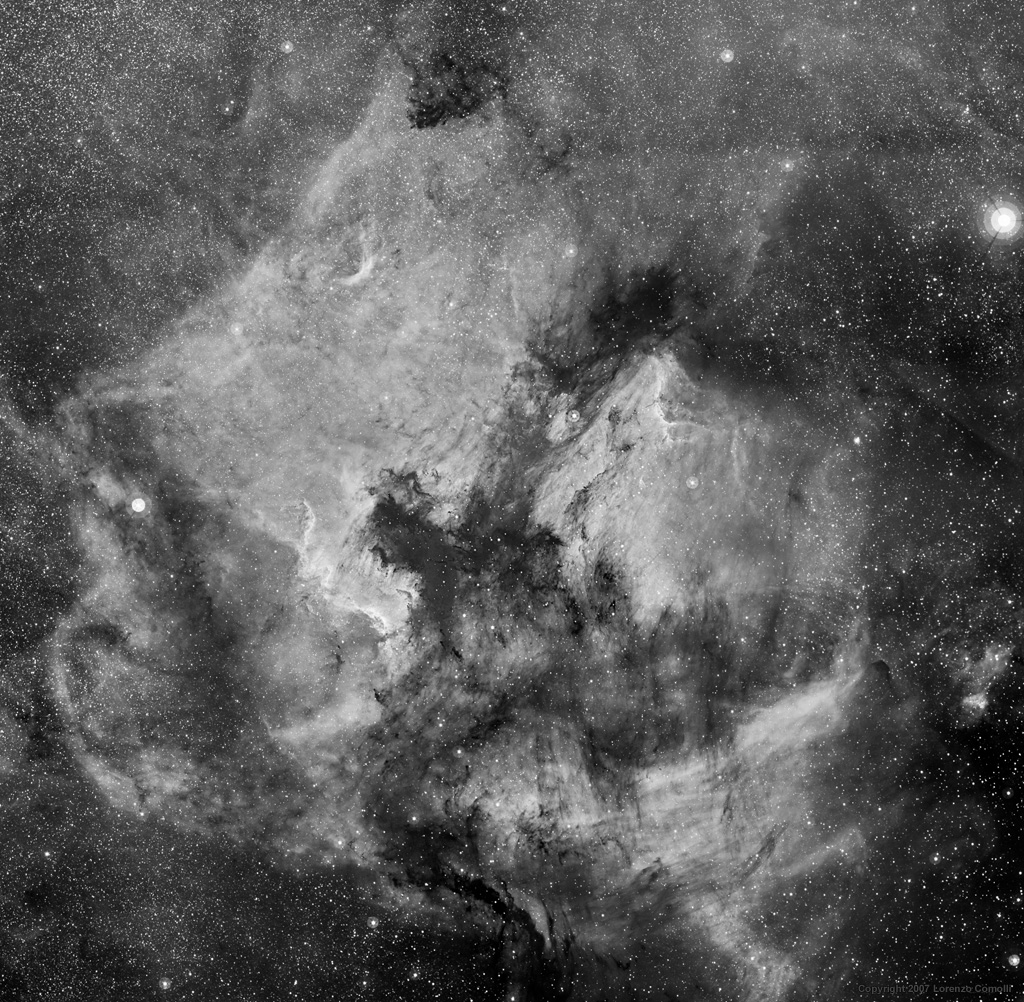
2000x2000 - 4000x4000
See also a color+Halpha version of the central part
|
|

The North American nebula (NGC 7000)
is
really a wide nebular complex that emit mainly light in the line
of
hydrogen alpha. That light come from the excitation of the
hydrogen
atoms, due to the ultraviolet radiation of the many stars
present in
the field, and maybe also from the close star Deneb
(North-West). At
west of the North American lies the Pelican nebula (IC 5070),
connected
to the first with many nebulas. On the South a very interesting
reticular of nebulosity (IC 5068) with many streakings crossing
in the
vertical and horizontal directions.
Superimposed to the central parts of the North American, an open
cluster (NGC 6997) and a curious "comma" shaped nebula are
present.
|
|
|
| Optics | Schmidt
camera 400/300/615 (Zen optics) |
| Focal Lenght | 615 mm |
| Focal Ratio | f/2,0 |
| Exposure Time | Total 29
hours. Mosaic of 6 frames plus the central region.
348 frames of 5 min
each. |
| CCD | A camera with Kaf-6303e |
| Sensor | Kaf-6303e
class 1 |
| Filters | H-alpha
6nm
Astronomik, selected for f/2 |
| Chip
temperature |
-30
°C and
-20 °C |
| Location | Tradate
(VA,
in Pianura
Padana, Italy) at 300m height |
| Date and time of exposure start | 9 full nights: 23, 28, 29 june and 4, 5, 6, 7, 17, 18 july 2007 |
| Mount | Astrosystems
Fork |
| Tracking | Webcam
Vesta
Pro B/W on a 120mm f/13 refractor |
| Temperature and humidity | T=between
13
and 25 °C, RH=between 40 and 70% |
| Sky brightness at zenith (with SQM-L) | 18.5 - 19.0 mag/arcsec^2 |
| Notes | The
first
attempt to compose a mosaic with the Schmidt camera |
|
|